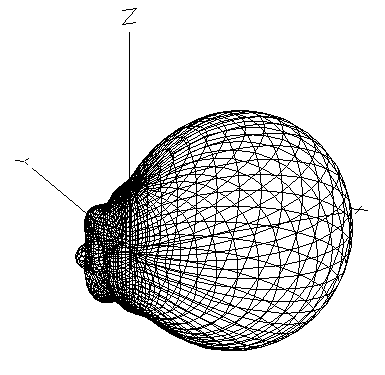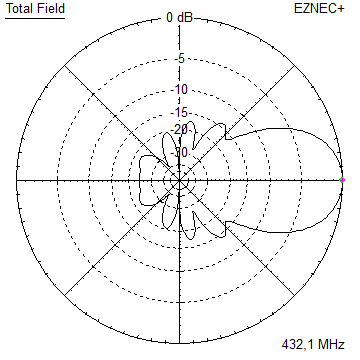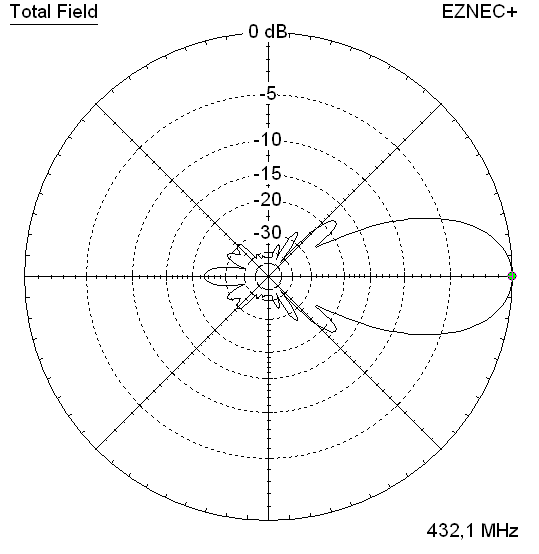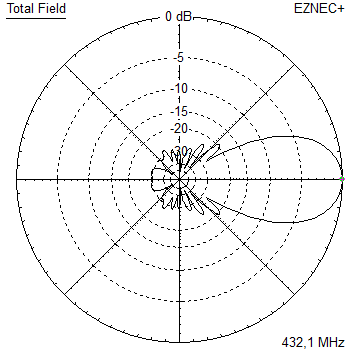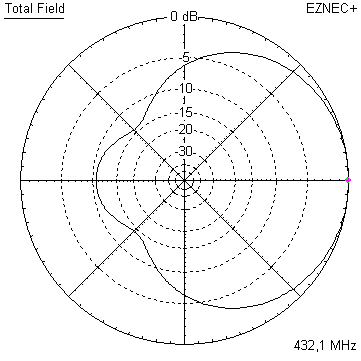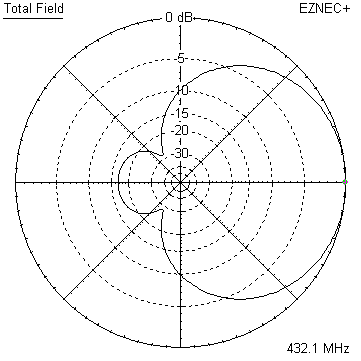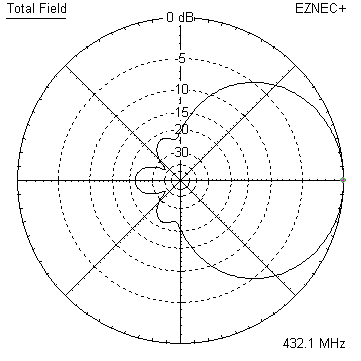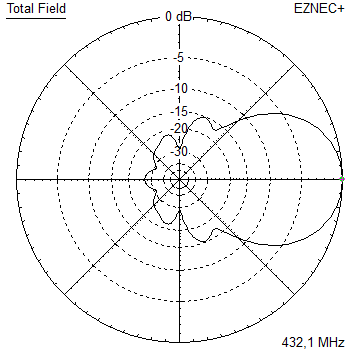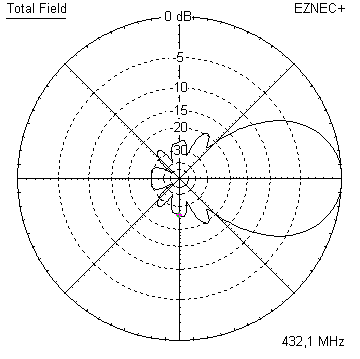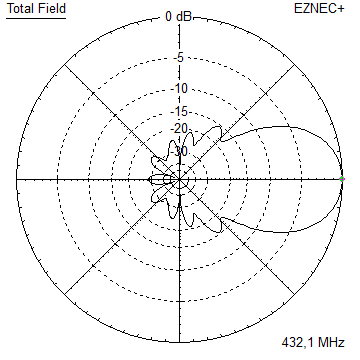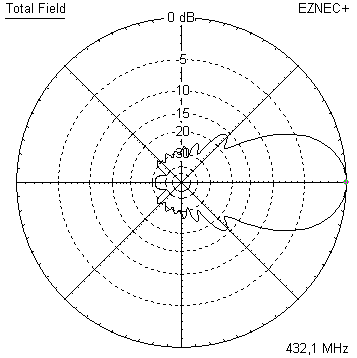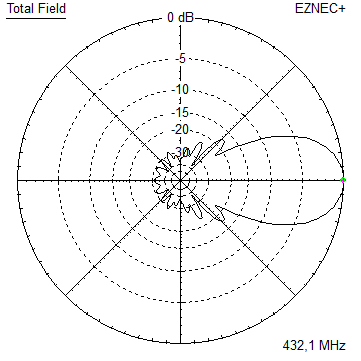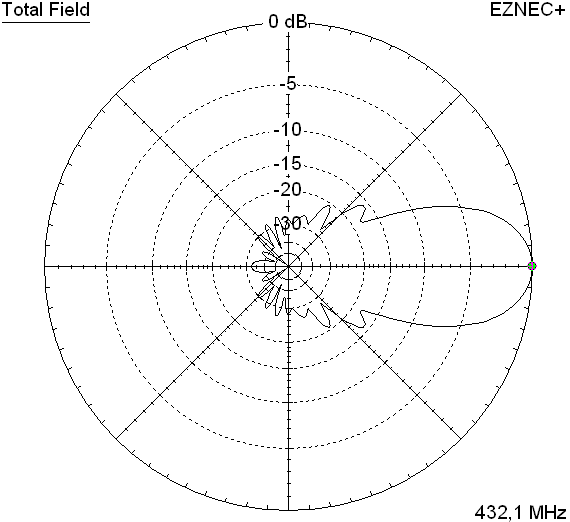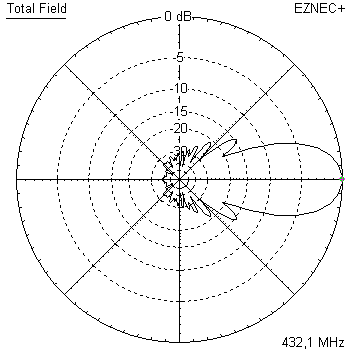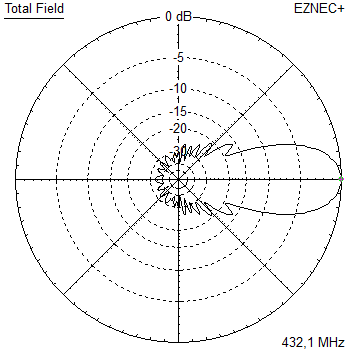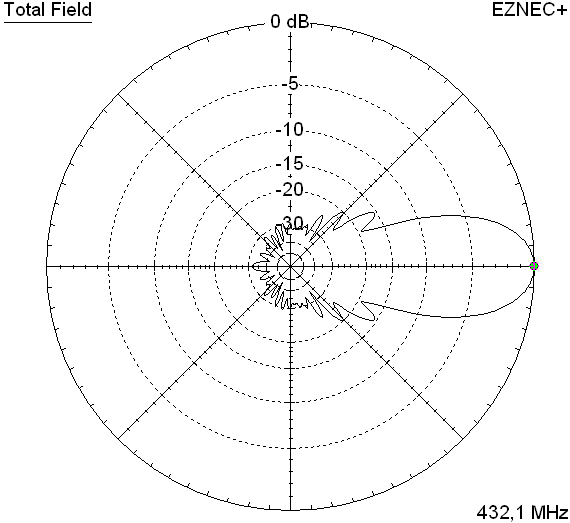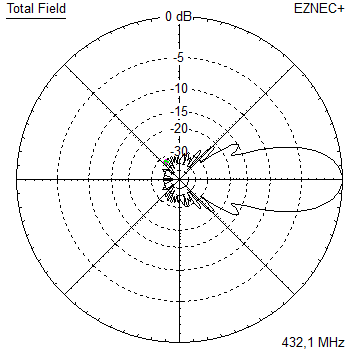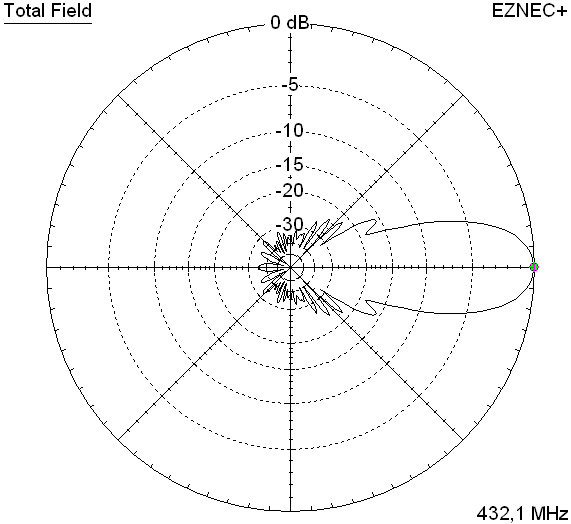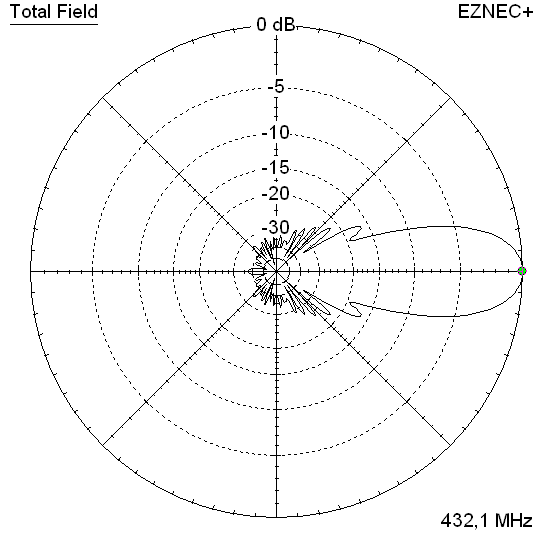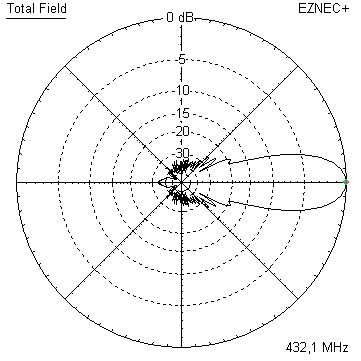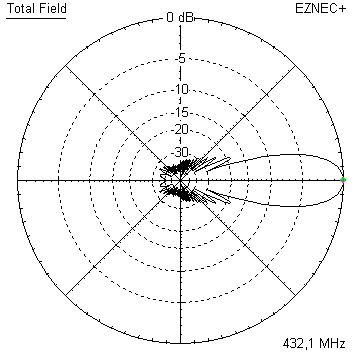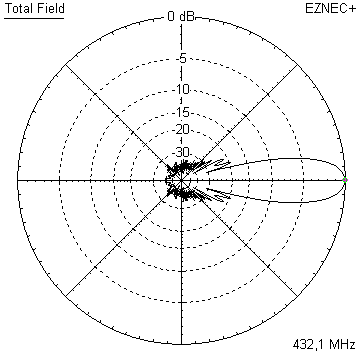
GTV 70-21n Yagi 'Voskhod' with bent Driven Element
EME + SSB narrow bandwidth version ... strictly G/T breeding
This Yagi has very low back lobes for its length. It may serve as single antenna for portable
use and certainly make a useful 4 x vertical stack. It makes a quiet contest antenna due to its
high F/B. The bent DE (K6STI style) transforms from approx. 17 ohms to 50 ohms at feed point.
It is another Yagi that needs to be built in a very accurate way. Date of issuing this design : 22nd of Aug. 2019

Plotted Return Loss
About the naming:
With spacecraft Voskhod 2 the first spacewalk of mankind was achieved:


As I understand it, re-entering the capsule was a tight affair but
nevertheless it was the first time a human was out in space.
• Here is a link to a documentation about Leonov and the spacewalk mission by the British BBC:
https://www.bbc.co.uk/news/magazine-29534966
Current distribution


2 x GTV 70-21n built by Gernot, DF5RF
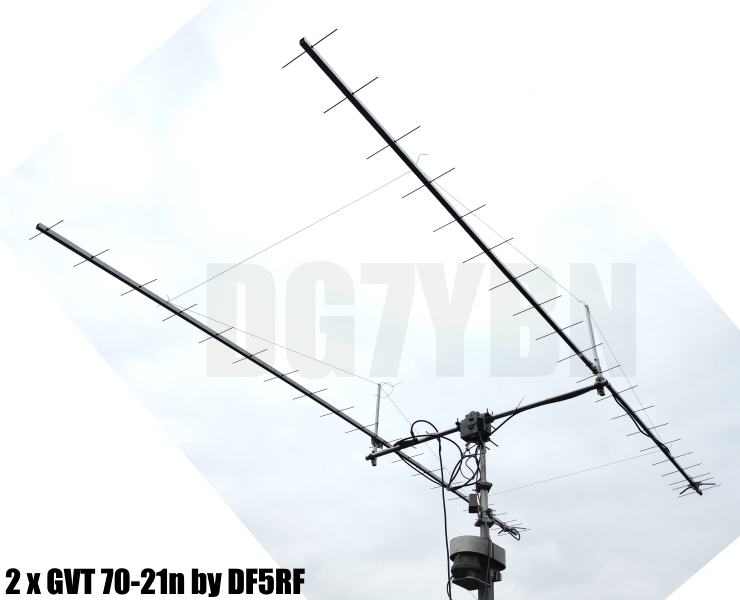
GTV 70-21n built by Thomas, M0ABA



And a quick first EME QSO dated 2019-09-01: MX0CNS < > DL7APV with no good Farady Rotation
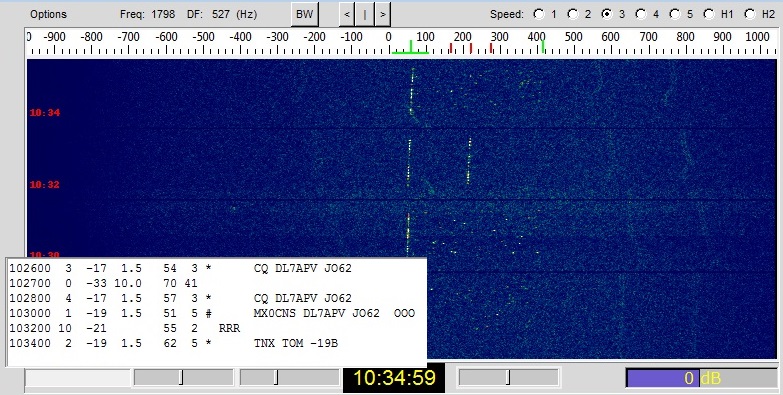
Performance Data
Specs: with 4 mm elements @ 432.1 MHz
Gain vs. isotr. Rad. 18.2 dBi Gain vs. Dipole 16.1 dBD -3 dB E-plane 23.8 deg. -3 dB H-plane 24.6 deg. F/B -40.5 dB F/R -32.4 dB Impedance 50 ohms Mechan. Length 4775 mm incl. 2 x 40 mm stand off Electr. Length 6.77 λ VSWR Bandwidth 1:1.48 (as in VE7BQH Antenna Table) Stacking dist. h-pol. top-to-bottom 1.63 m or 5.34 ft side-by-side 1.68 m or 5.52 ft
How many OMs have been looking up this design?
Geometry

Table 2: GTV 70-21n, 4 mm elements through boom:
"Ready to saw and drill" data for mounting elements through boom with BC according SM5BSZ's BC.exe:
Note: with through Boom BC it is important to stick to the boom end offsets given below!
Metric Boom 20 x 20 x 2 mm
|
Boom shape: square Boom dim: 20 x 20 mm Wall thickn.: 2.0 mm Holes in boom: 6.0 mm Offset rear: 40 mm Offset front: 40 mm |
|
Note: with through Boom BC it is important to stick to the boom end offsets given below!

Metric Boom 25 x 25 x 2 mm
|
Boom shape: square Boom dim: 25 x 25 mm Wall thickn.: 2.0 mm Holes in boom: 6.0 mm Offset rear: 40 mm Offset front: 40 mm |
|
Note: with through Boom BC it is important to stick to the boom end offsets given below!

Imperial Boom 1", elements 4.00 mm
|
Boom shape: square Boom dim: 1 x 1 inch Wall thickn.: 1.6 mm Holes in boom: 6.0 mm Offset rear: 40 mm Offset front: 40 mm |
|
Note: All the above include a "Segmentation Density Correction" (SBC) of 1.1 mm plus an offset of 0.70 mm per element = 1.8 mm
for compensation of the insulators (7arrays.com
Note: with through Boom BC it is important to stick to the boom end offsets given below!
Read abt. the SBC here

Imperial Boom 1", elements 3/16 inch
|
Boom shape: square Boom dim: 1 x 1 inch Wall thickn.: 1.6 mm Holes in boom: 7.9 mm Offset rear: 40 mm Offset front: 40 mm |
|
Note: All the above include a "Segmentation Density Correction" (SBC) of 1.1 mm plus an offset of 0.70 mm per element = 1.8 mm
for compensation of the insulators as shown above in combination with SM5BSZ'S BC.exe values.
Note: with through Boom BC it is important to stick to the boom end offsets given below!
Read abt. the SBC here
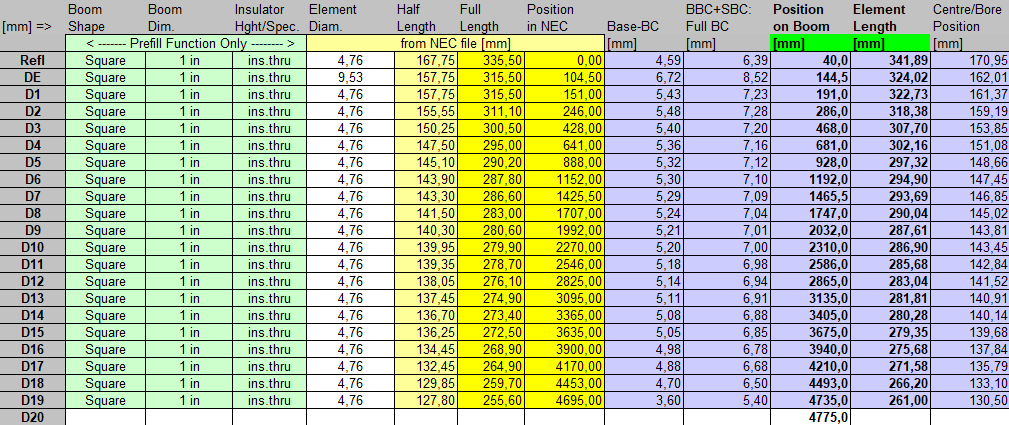
For making of a 'Blade Dipole'
Sketch of Bent Dipole

Radiation Pattern and VSWR Plots
Elevation and Azimuth plot at 432.1 MHz (4 mm ele.)


SWR and Return Loss plots - simulated with 4nec2
(I have settled the best Retrun Loss a bit higher for giving headroom in wet weather)

This Yagis S11: Return Loss (dB) 400 ... 450 MHz plotted by ZS6JON with an Anritsu MS2000 VNA:


Stacking
As on 432 MHz the Y-factor = T_earth / T_sky is so high, I see little chances to
improve an array's RX performance by using "Over Stacking" distances. However, depending on
the level of local QRM it might be worthwhile to try a decreased distance, especially in the H-plane.
Stacking Dist. DL6WU Formula H-plane 1.68 m E-plane 1.63 m
A 4 Yagi bay
Elev. Plot

Azim. Plot

Gain vs. isotr. Rad. 24.1 dBi Gain vs. Dipole 22.0 dBD -3 dB H-plane, appr. 17.4 deg. -3 dB E-plane, appr. 12.0 deg. F/B -44.8 dB F/R -33.1 dB T_ant 52.7 K* G/T 6.89 dB* at Tsky = 27 K, Tearth = 1800 K as in newer VE7BQH Antenna Table
3D pattern plot with 4nec2's 3D viewer

Antenna G/T with AGTC lite:

Symmetrising 50 to 50 ohms feedline to 432 MHz Bent DE
The principle is similar to the 1/4 Lambda coax. Adding 2 x 1/4 Lambda or a half wave line does not change anything but allows
to form a gentle bow below the boom or until behind the Reflector. Follow practical construction hints on "Building a Yagi" page.
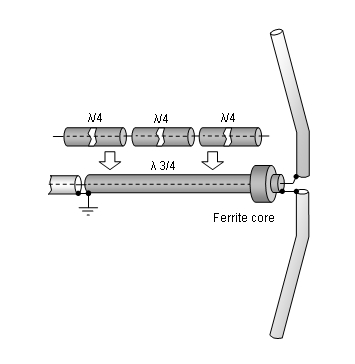
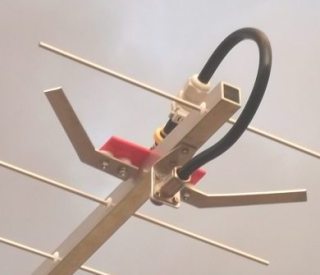
 Attenzione!
Take care when lengthening the coax, measure the actual electrical length instead of considering v-factors specified in a catalogue only.
Attenzione!
Take care when lengthening the coax, measure the actual electrical length instead of considering v-factors specified in a catalogue only.A good choice may be the diam. 5 mm PTFE coax RG-142 B/U: real resonate length (432.2 MHz as 3/4 Lambda) shield-shield is around 348 mm
 Find more information on Phasing & Matching Lines page
Find more information on Phasing & Matching Lines page 73, Hartmut, DG7YBN
